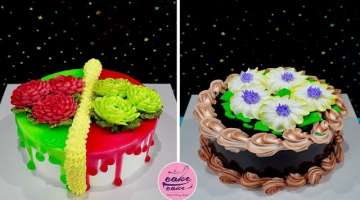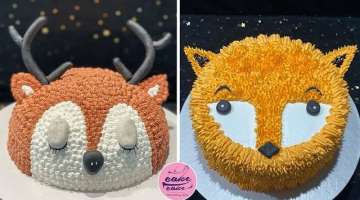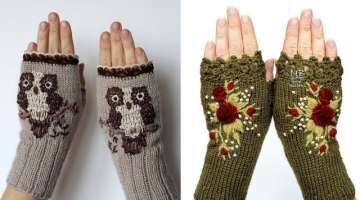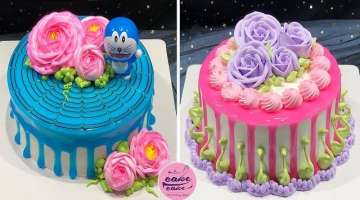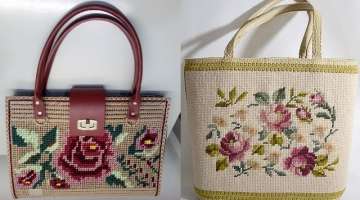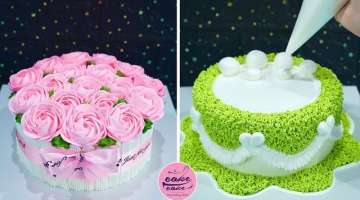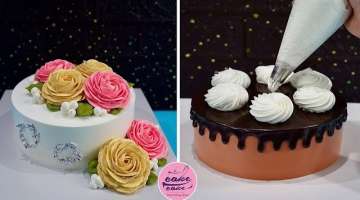Extraordinary Pigeons You Probably Didn't Know Exist (10 different pigeon species)
The world is filled with amazing, otherworldly species of birds, each with its unique colors and skills. While many may not realize it, there’s an unbelievably huge variety of extraordinary pigeon species in the world. That’s right, the world has much more to offer than those city pigeons you try to keep off your porch.
- 1 | 18

Some scientists believe that the common city pigeons (or rock pigeons as they prefer to be called) are the first birds to be domesticated by humans. Rock pigeons featured in many of the ancient Mesopotamian's paintings, mosaics, and statues from 4500 BC, and even earlier. But that's enough talking about pigeons. Sit back and enjoy some of the finest, most colorful, and extraordinary pigeons our world has to offer:
- 2 | 18

The Nicobar Pigeon: The Nicobar Pigeon is one of the most beautiful of the many species of pigeons or doves and is the only living member of the genus Caloenus. It is found in the Islands of Nicobar, south west peninsular Thailand, Malaysia, Vietnam, Indonesia, Philippines, Solomans and palau. Once known to be found in abundance in its range, their numbers in the wild are declining as they are frequently captured for pet trade and hunted for food.
- 3 | 18

This species is classified as Near Threatened in the IUCN Red List and listed in Appendix 1 of CITES as their numbers in the wild are on the decline. These birds are captured for food, pet trade and their gizzard stones which are used to make jewellery. Their distribution is also being affected by habitat loss as the islands which they inhabit are being cleared for plantations, and also being colonized by rats, cats and other alien predators.
- 4 | 18

Brown Frillback Pigeon: The Frillback pigeon is a breed of domestic fancy pigeon. It is an ancient breed and actually was developed over many years of selective breeding. It is believed to have originated somewhere in Asia Minor. This breed and other varieties of the domesticated pigeons, all are descendants from the wild or feral rock pigeon.
- 5 | 18

The curl of a Frillback pigeon covers its entire wing shield. No areas should be uncovered. The last row of curls spans the entire length of the wing. Frills form a distinct ringlet curl at the end. The bottom of the muff is also frilled. Tail and flight feathers have a distinct wrinkle. The Frillback pigeon appears in many color varieties, and the color categories are listed below.
- 6 | 18

Victoria Crowned Pigeon (Goura victoria): This bird is the largest living pigeon and the closest remaining relative to the extinct dodo bird. It was named in honor of Queen Victoria for its flashy blue crown of intricate lace-like patterns and its regal poise. Originally from New Guinea and introduced to nearby islands, the Victoria crowned pigeon has been bred in captivity for hundreds of years. They're a common sight in the United States and the United Kingdom at zoos and aviaries, though they are somewhat rare in the pet bird trade.
- 7 | 18

A stunning bird, Victoria crowned pigeons sport powdery blue feathers on their bodies with red eyes, a dark mask, and maroon breasts. They display a lighter shade of blue on their wings and in a band on their tailfeathers. This bird is a monomorphic species, meaning males and females look alike. A male may be slightly larger than a female, but it's barely noticeable. To figure out the sex of your bird, it would require a surgical sexing procedure or a genetic test.
- 8 | 18

Brunner Pouter Pigeon: The Brunner Pouter presents an elegant and pleasing appearance. It has a lively and vigorous temperament, characterized by much strutting, bowing and hopping during courting. This courting play is performed by both cock and hen. An erect, upright posture, proving a long narrow appearance is most desirable. The back and tail should form a straight l,ne descending at about a 60 degree angle. The inflated crop should stand out distinctly from the back of the neck. A Brunner Pouter should be just a bit smaller than a Pigmy Pouter. It should in no way be more than 13 inches in lenght as measured from the point of the beak to the tip of the tail.
- 9 | 18

Scandaroon Pigeon: The Scandaroon pigeon is a breed of fancy pigeon from Germany. It is also known as a Nuremberg Bagdad, and was developed over many years of selective breeding. This breed along with other breeds of domesticated pigeons, all are descendants from the rock pigeon. It is probably one of the oldest breeds of pigeon, and is believed to date back to the time of Alexander the Great. Scandaroon pigeon is mainly raised for it's looks, but also popular as a utility breed for meat production. Read some more information about the bred below.
- 10 | 18

Polish Wattle Pigeon: The Old Polish Wattle Pigeon – or also known by the names: Altpolnische Warzentaube , Ancien Pigeon caronculé Polonais – Bulldog is already registered as an Old Polish Wattle pigeons. It differs from the Podkarpackie slightly with the construction of the head and slightly thicker beak. The head of this exhibition bulldog is similar in shape to the head of the Ostrowiec Wattle pigeons, it is similar to it at all.
- 11 | 18

The problem is that it is a bulldog of the Świętokrzyskie type, not much different from the Podkarpackie pigeons and probably related to it. In central Poland, especially in the vicinity of Łódź and Masovia, however, other bulldogs are raised, larger, more massive, with larger galls. The construction is more similar to the German indian than to the Old Polish papilloma (bulldog type exhibition). In Romania, a twin breed similar to our bulldogs from central Poland.
- 12 | 18

Swedish Owl : Swedish Owl ornamental pigeons – also known by the names: Cravaté Suédois, Schwedisches Mövchen, Cravattato Svedese, are varieties originating from the southern regions of Sweden, which have been known to have been developed since the late 1800s. Varieties classified into this type of Owl are actually quite popular and are very common in their home countries, but have not been widely bred in Europe – Germany is one of the countries that has carried out intensive development for this variety. It was informed that this variety besides having good flying ability, also had an attractive appearance, beautiful and graceful. This variety was established in the permanent standard in 1960.
- 13 | 18

Spinifex Pigeon: Spinifex Pigeons are permanent residents of the arid spinifex grasslands of northern and central Australia. They have very effective camouflage colouring for living, and feeding, on the ground and run quickly and erratically from intruders.
- 14 | 18

Lahore Pigeon: It is mainly an ornamental breed and actually from ancient Persia. It was once bred for it's meat, but today it is raised mainly for it's beautiful plumage and colorful patterns. Neck of the Lahore pigeon is heavily feathered and should lead to a full, broad chest. Their cheeks should be plump, and the beak should be 'broad and stout and rather blunt at the tip'. Their legs and feet are feathered so that the bird appears to be wearing thick stockings. Currently the breed is bred in many different colors including blue, brown, black, blue-bar, checkered and red. Lahore pigeon is approximately 10.5 inches tall and about 11.5 inches long. And it measures about 5.5 inches from shoulder to shoulder. Photo and info from Wikipedia.
- 15 | 18

The Lahore pigeon is usually a very gentle and shy bird. It is of very good behavior and has relatively docile temperament. These birds are of good natured and can be tamed easily and quickly. They are fairly broad in breast and body. And they are sometimes used to produce squabs for the table. The breed is excellent for show and also very good for raising as pets. However, review full breed profile of the Lahore pigeon in the following chart.
- 16 | 18

Jacobin Pigeons: Jacobin pigeons were named after the Jacobin order of monks who date from 1100 and were known for their distinctive hooded habits. According to the Oxford Dictionary, the Jacobins were Dominican friars so-called after the nearby church of St Jacques in Paris. (Jacobean refers to the reign of James I.) According to breeders, the Jacobin pigeon was developed from a mutation known as early as the 1500's. It went through four major stages of development to reach the bird of today.
- 17 | 18

The Jacobin is a medium sized pigeon, not as robust as a racing pigeon, quite slender and tall. It is characterised by a distinctive muff or cowl of feathers which forms a rosette on both sides of the pigeon's head. This is made up of a mane at the back of the head, the hood over the top and a "cravat" of two lines of feather running down the front of the chest. From the mane to cravat across the line of the eye the hood measures 5-6 inches. It stands a couple of inches above the head. There is currently a trend towards breeding Jacobins with longer necks which then hold the hood off the shoulders. This is said to better display the hood. The breeder interviewed for our segment, Mr Darcy Cook, says there is a problem, however, in that the birds with the best feather quality also appeared to be those which were heavily shouldered. There is no feathering around the feet. Apart from the hood, the birds are slender and sleek. The Jacobin in Australia comes in black, white, red and yellow.
- 18 | 18

Some breeders describe the Jacobin as a pugnacious bird, others prefer to describe them as being 'individualist' and recommend separate breeding boxes for each pair. This is because when paired for breeding, cocks can and will take over a cage floor as their territory and could prevent other birds from feeding. Jacobins are not considered a housepet. They area breed for the fancy pigeon enthusiast, not for the beginner due to the fact that fostering is required. Mr Cook allows 1.2m x 1.8m x 1.8m (4ft x 6ft x 6ft) for three pairs. Many breeders use sand on the floor, not sawdust which will blow around, and recommend cleaning the loft thoroughly fortnightly. Food needs to be fresh daily.


